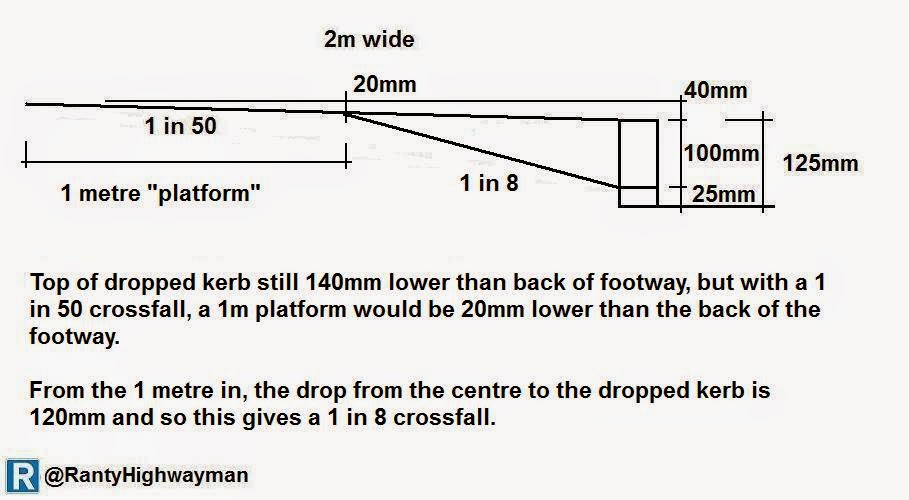Last week, there were various news reports flying around about a cyclist who hit a toddler as he cycled along a footway in Blackpool (he has turned himself in to the police).
I am not going to link to the story, you can find it yourself. I am not going to defend the behaviour of the person who hit the child with his bicycle, it cannot be defended. We all know how rare it is for someone riding a bicycle to hit someone walking - the toll from motor vehicles is the real issue. Of course, a news story involving a child and a "cyclist" has some of the media foaming at the mouth - Nick Ferrari on his LBC radio show certainly did last week as he tried (and failed) to bait Carlton Reid who attempted to "de-generalise" the popular canard that all cyclists ride on the footway and are dangerous.
As usual, for me, the story is much deeper. On the surface we have the #bloodycyclists rage for a few days and then we are all on to the next controversy. I have been thinking about why this chap was on the footway in the first place and so let's look at the street where it happened, Collingwood Avenue in Blackpool. I do need to sound the armchair pundit alarm at this stage as I am going by what I can see using Google - I don't know the area myself.
 |
| Collingwood Avenue, image from Google Streetview. |
The street itself is to the east of the town, with a wide carriageway (perhaps around 9 metres) and footways around 2 metres in width. There is little off-street parking because of the small front gardens the houses have, and so cars are parked on both sides.
The street hits a signalised crossroads at its southern end (with advanced stop lines for bicycles) and turns into Layton Road at its north end (which soon connects to the A586). About a third of the distance down from the northern end of the street, there is another signalised cross roads with ASLs. It looks like a pretty normal residential street, like we have all over the UK, although the northern section becomes wider and I bet faster on account of the speed cameras.
 |
| Speeding traffic? Image via Lancashire Partnership for Road Safety |
On closer look, the signalised junctions at each end have Advanced Stop Lines (ALS), there is a sign on the street which indicates "route recommended for pedal cycles on the main carriageway of the road" (yes, I see the irony) and a couple of cycle route direction signs to local destinations. I have also found on Open Cycle Map that this street is a "local cycle route".
OK, I will come out with it. I reckon this street is awful for cycling - the incident was captured on CCTV (on the house where the toddler lives) and in the 5 second snippet, 3 cars pass the scene at 3.15pm (the incident took place on Monday 18th May). Yes, this is massive (and utterly unscientific) extrapolation, but 3 cars in 5 seconds is busy and I would love to know the truth - with signals in the street, it is likely that groups of vehicles come down as a "platoon" rather than being a constant flow. I will go further, my gut tells me that it is a rat run. The other bit of armchair evidence can be found on Crashmap. Between 2009 and 2013 (the data currently on Crashmap), there were 8 injury collisions, 2 involved those cycling (both at the signalised crossroads about a third of the distance from the northern end of the street).
Yes, lots of theories and opinions there (and very shaky evidence I accept), so perhaps Collingwood Avenue is a quiet street and people can cycle on the carriageway in perfect safety, but I doubt it. The real story here is why this person was riding his bicycle on the footway in the first place. Was he there because conditions are normally awful and so he rides of the footway as a matter of routine or does he ride on the road elsewhere where it is quiet, it is just that this street is too scary?
It took me about 2 hours to write this post, including research (as much as it was), so why has the reporting been so superficial? Sadly, the shock of the incident is the story for most here, whereas the much wider story which should be reported is how our streets have become so hostile that we get people behaving like this. All very well for an armchair pundit like me and of course talk is cheap. So, what could be done to make this street feel safe?
 |
| We know what the answers are, don't we? |
The speed limit should be dropped to 20mph within the filtered streets (the main roads could stay at 30mph if protection for those walking and cycling is provided). It is a pattern which comes up time and again and should be discussed every time that someone walking or riding their bicycle is hurt on our roads. We need to move this tired old discussion on, it is boring and not changing anything.





















